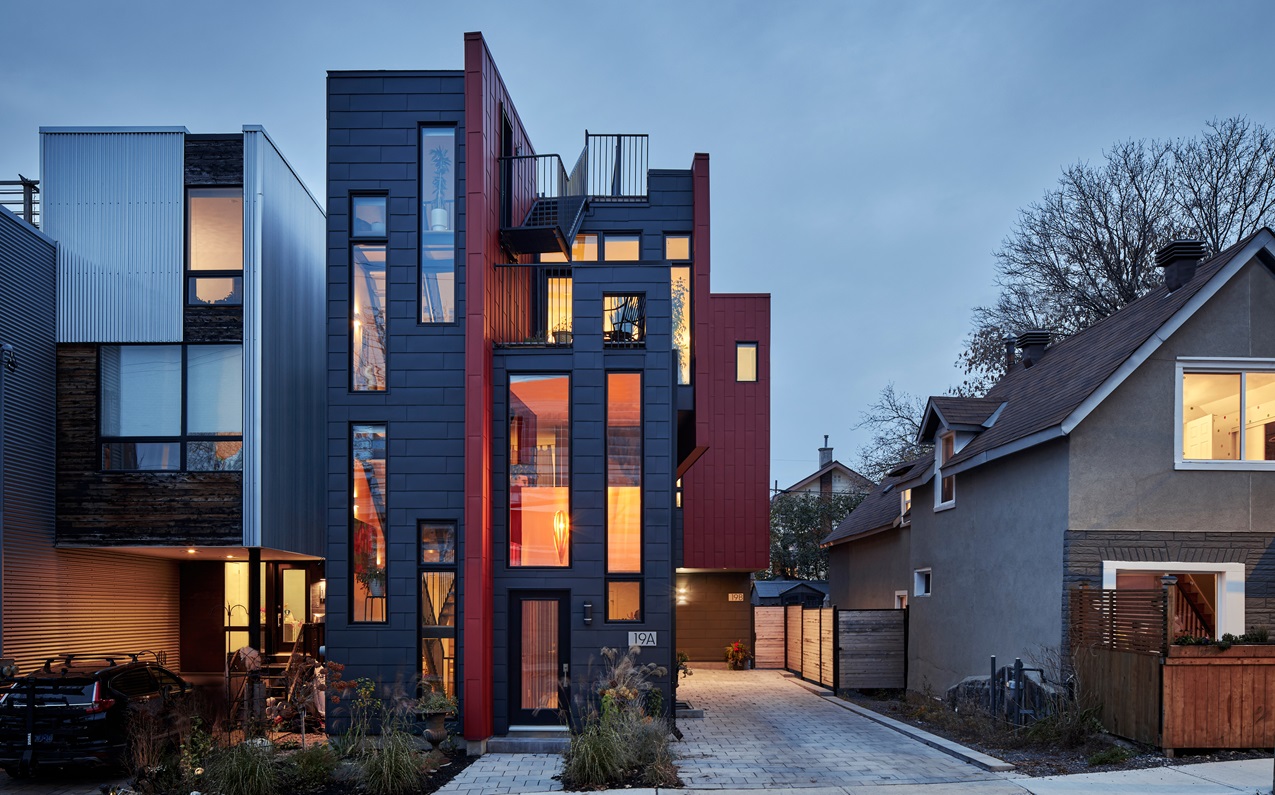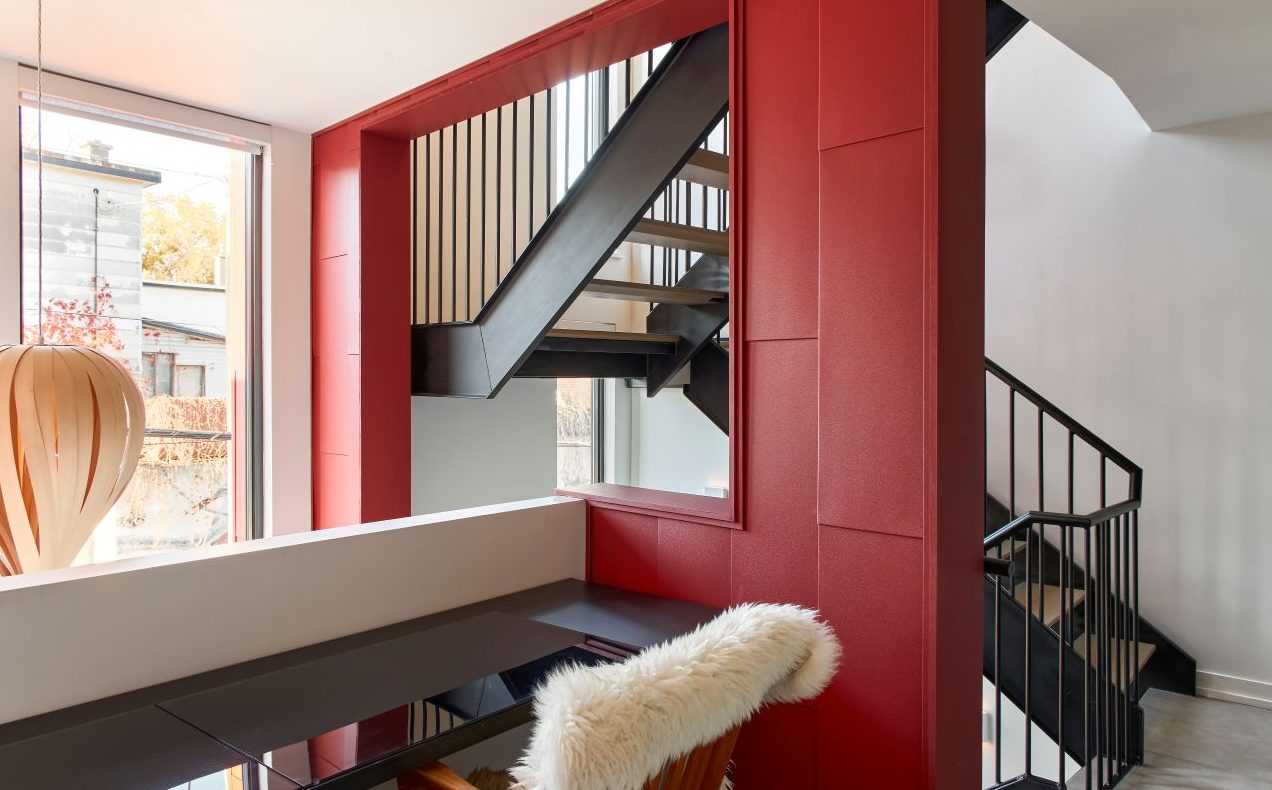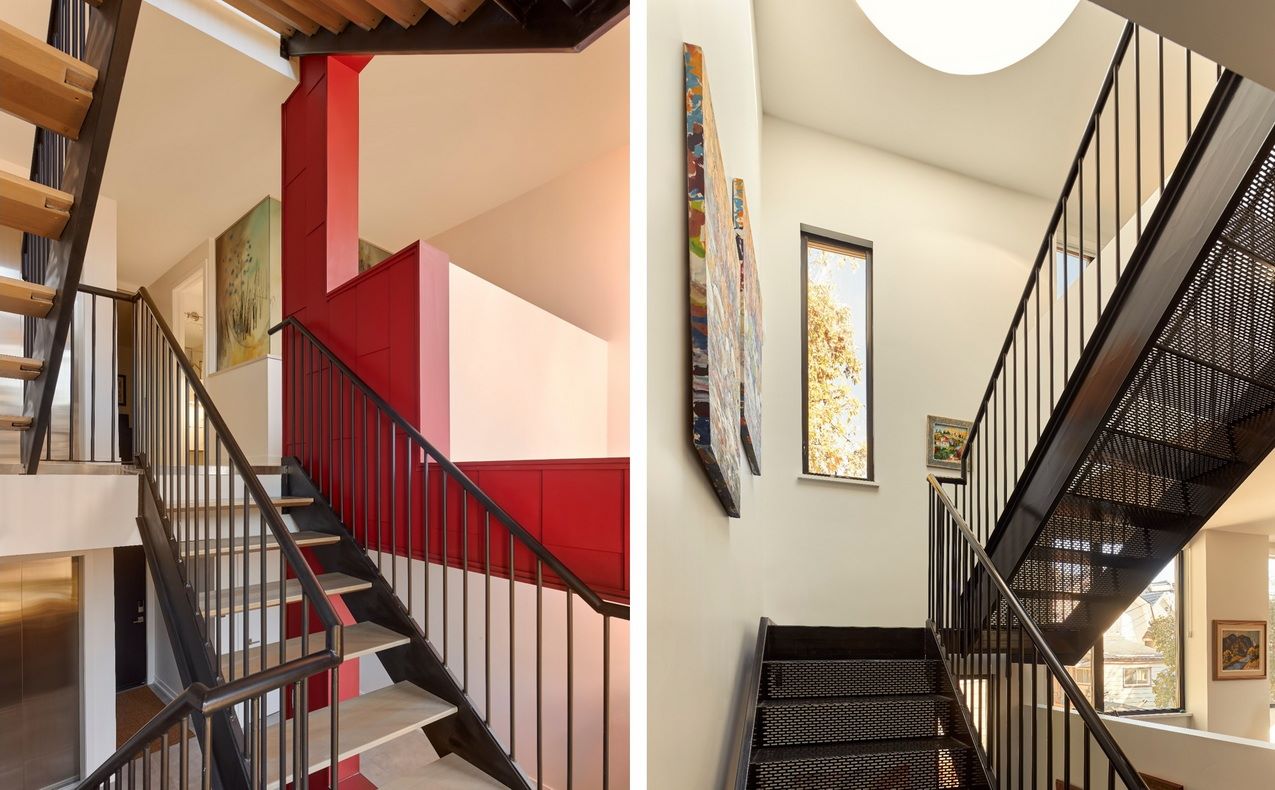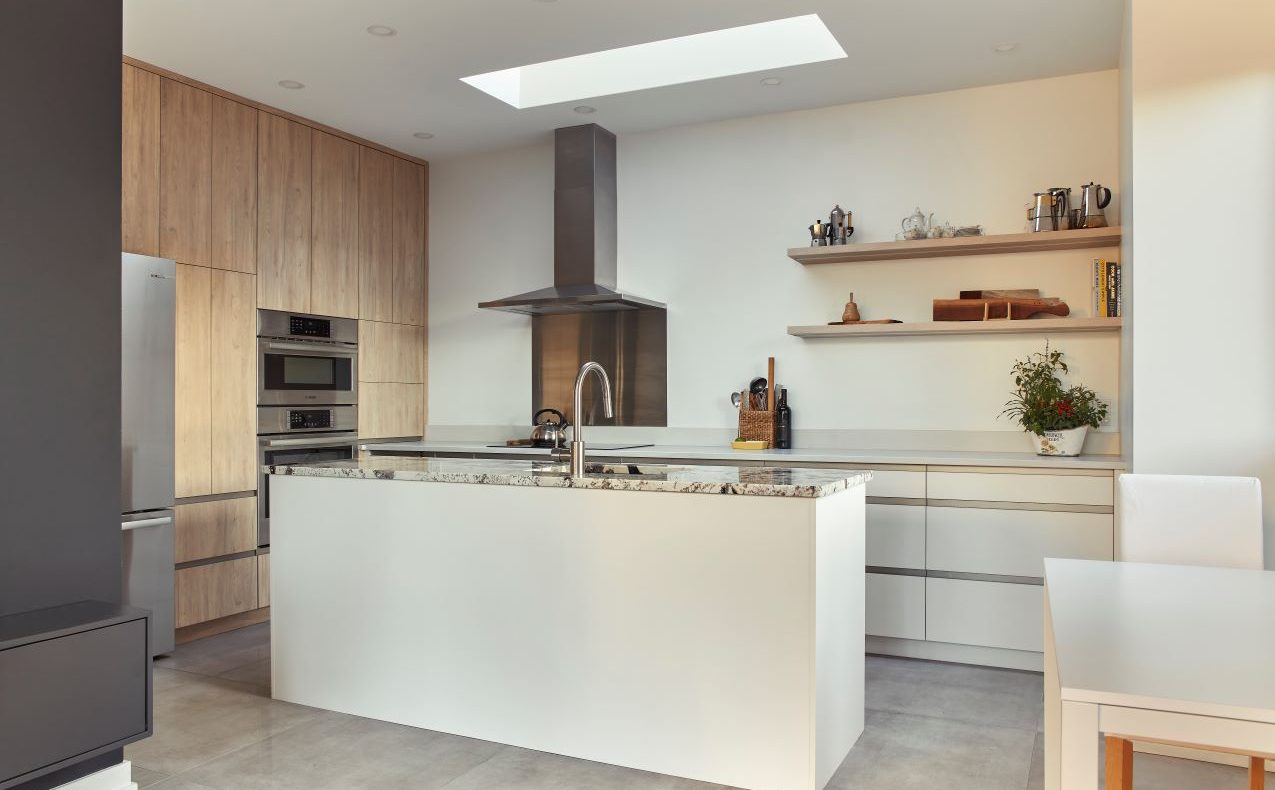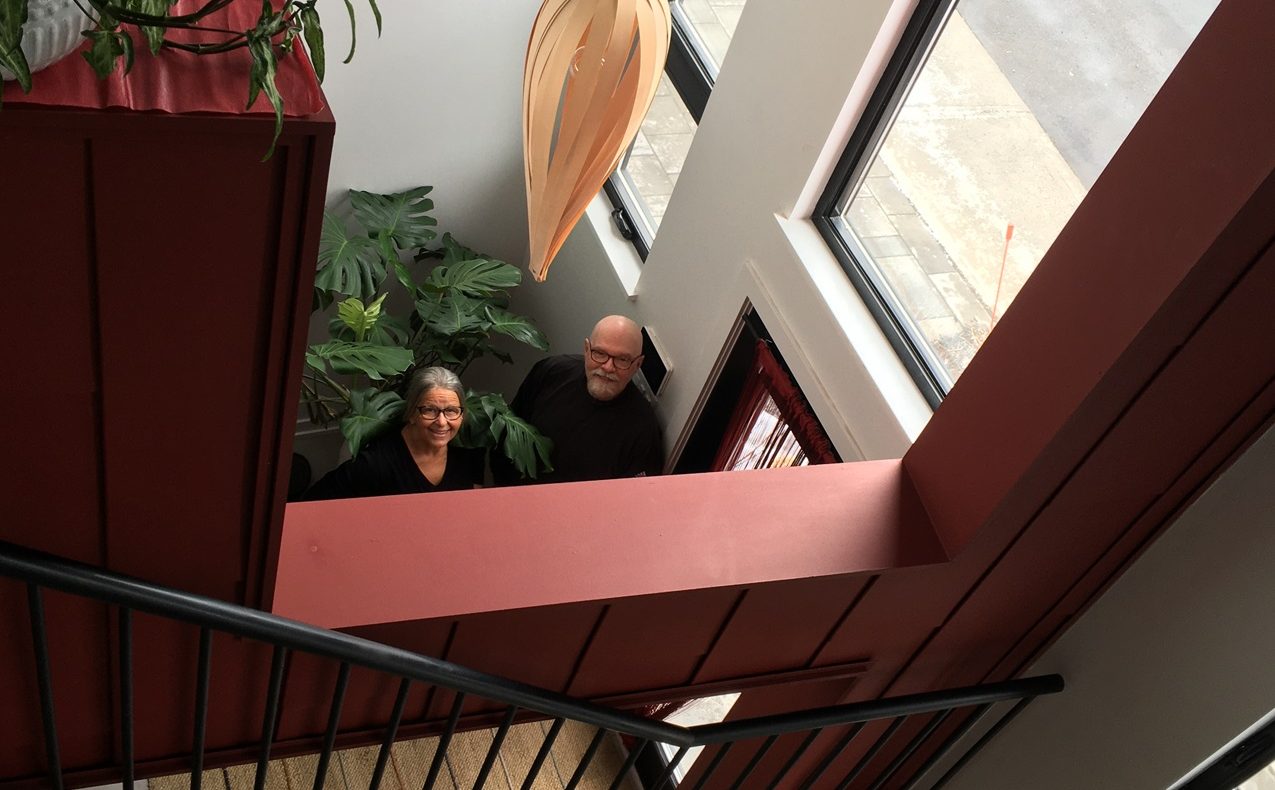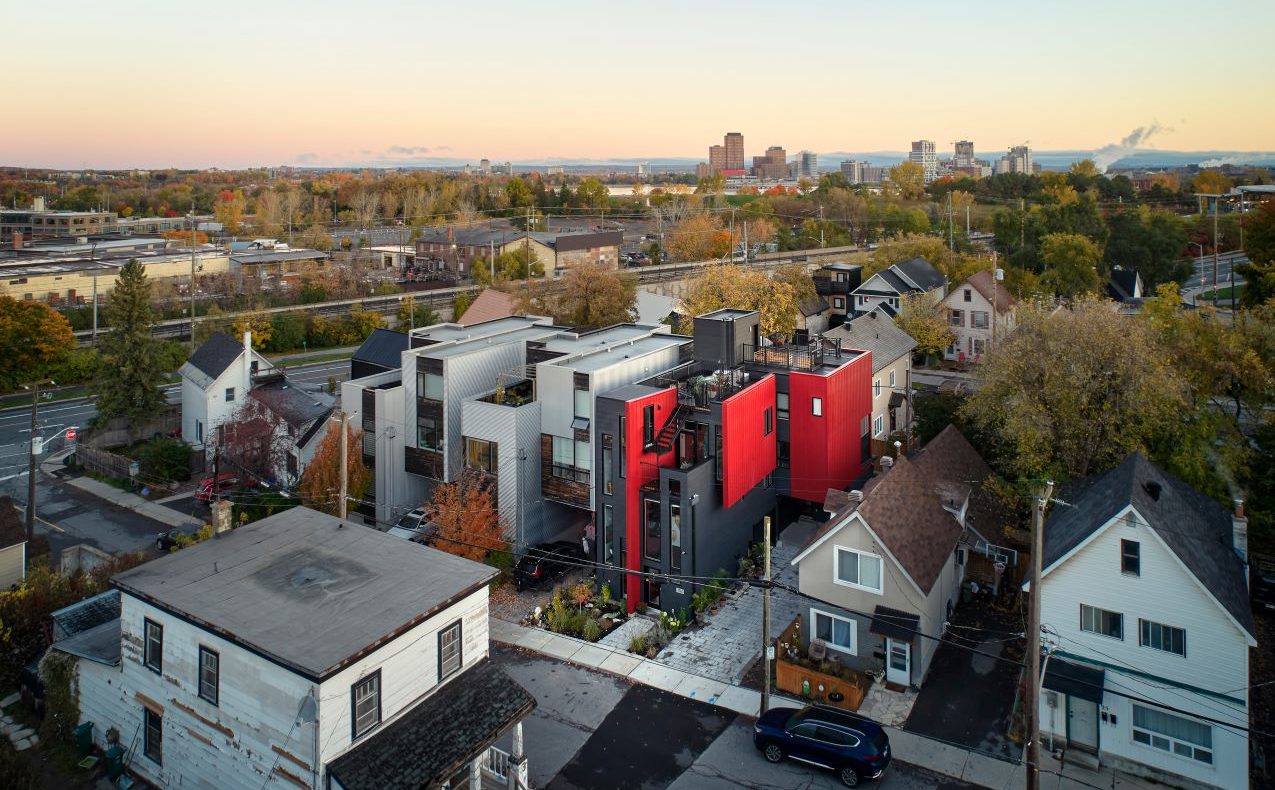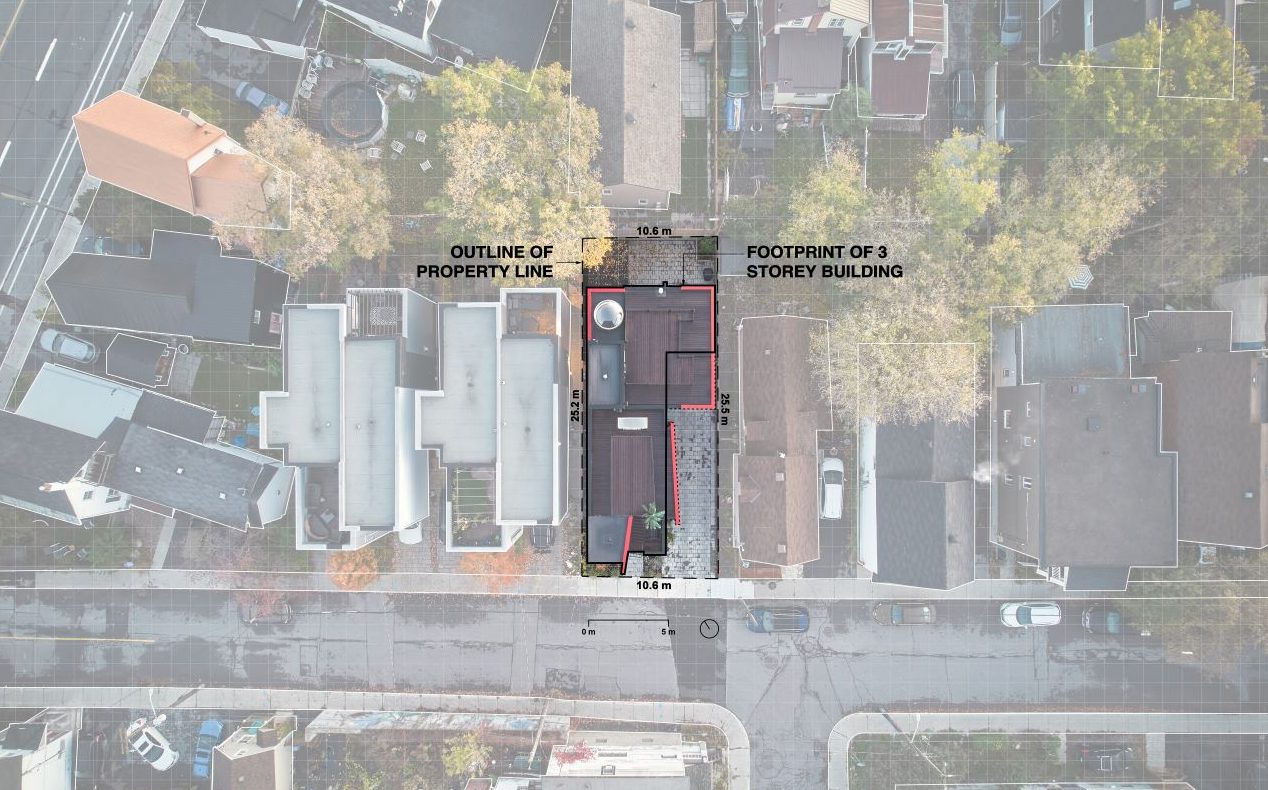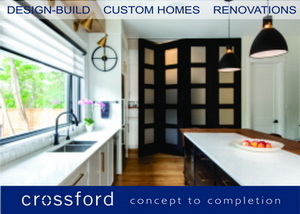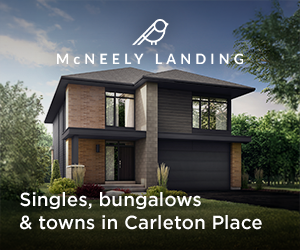Brightly hued, visually welcoming and cleverly designed both inside and out, the Sorelle House in Hintonburg spotlights what can be achieved when love, creativity and a view to the future — as opposed to simply maxing out square footage — are invested in an infill home.
Designed by Kariouk Architects and built by Crossford Construction, the Sorelle (Italian for “sisters”) House was created for siblings Sandra and Franca Di Diomete and Franca’s husband, Mark Holmes. The house is actually two separate but joined dwellings — one in the front and one in the back — each with its own distinct character, both with multiple levels, rooftop terraces and designed for aging in place, and each including a concealed garage with the home’s mechanical room beneath it.
The homes, which together form a rough L-shaped footprint with the foot of the L in the back, were built to replace Sandra’s former home, an old bungalow in the gradually gentrifying neighbourhood. Together, the two residences have roughly 4,500 square feet.
Franca died a little over a year after she, Mark and Sandra took possession of their homes in 2022, but the bond between the three lives on in the Sorelle House, with Sandra continuing to love living in her street-facing home and Mark in his more private space behind his sister-in-law’s.
The three had long lived just blocks away from each other and babysat each other’s home on a regular basis. They often thought, “Wouldn’t it be great if we were right beside each other and as we get older we can be with and support each other,” says the ebullient Sandra, who is a Grade Two teacher. “You kind of joke about it and one day you go, ‘Oh, could we do that?’”
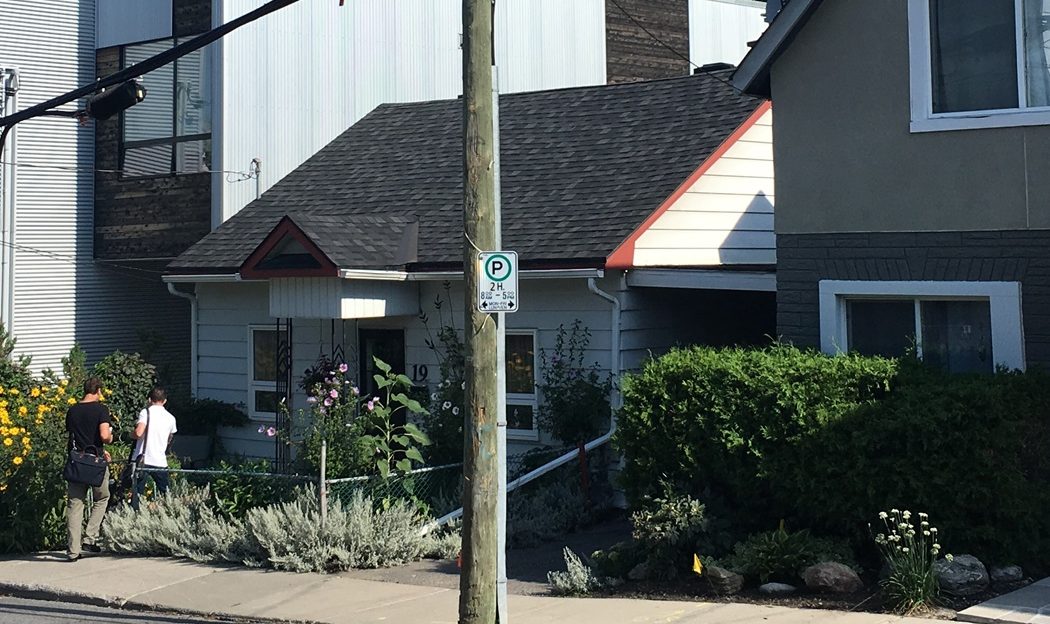
Sandra’s bungalow was rapidly aging, and all three wanted to stay in the area, “a neighbourhood where you can walk to just about anything you need,” says Mark, a friendly, retired social worker (as was Franca).
So, they decided to turn the fantasy into reality.
A sculptural approach with different interiors for different people
Enter architect Paul Kariouk in 2018. He describes designing the two interlocked homes on a small urban lot while adhering to municipal restrictions, building codes and client wishes akin to mastering the 3D puzzle Rubik’s Cube.
“They wanted something more visually interesting and artful,” says Kariouk, referencing the sculptural exterior with its strong vertical lines, the gradual step-back of its massing and its various cutaways as well as the delightful surprises of its interior layout.
The three also wanted something punchier than just another infill, he says, and the finished project, including the bold red steel shingles on the exterior that continue into Sandra’s interior space, fit them to a tee. “They always picked the more daring aspects of the design or colour.”
On the inside, both homes have a basement bedroom that can accommodate a live-in caregiver if the time comes. Each home is also fitted with a small elevator with a shiny stainless-steel door to make movement between the various levels easier should the stairs ultimately prove a challenge for the owners.
The ground floor of each home is primarily an entryway, with a small bathroom also tucked into Mark and Franca’s space.
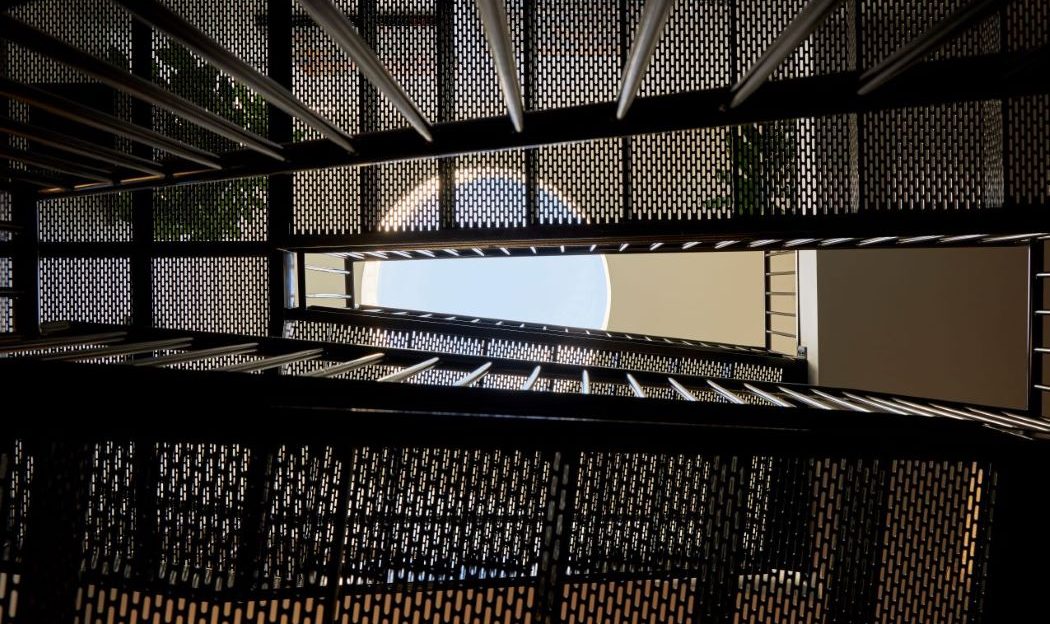
As you progress up the open, airy staircases — wood and steel in Sandra’s case, perforated black metal lit by a rooftop oculus (or large skylight) for Mark and Franca, and both continuing the sculptural theme of the exterior — Mark and Franca’s home becomes more private while Sandra’s is more public and in line with her love of entertaining.
The second floor of Sandra’s home has a small study area and her bedroom and ensuite, while Mark and Franca’s is given over to the main living area, which is decorated in quiet tones, has a small balcony and feels spacious. “Our old home was very segmented, but this feels so open,” he says. The kitchen includes extensive storage and a mammoth island with a granite counter to cater to his love of cooking. (“Everything he does is delicious!” exclaims Sandra.)
The third floor of Sandra’s home is her main living area and includes a street-facing balcony. With its long, abundant windows facing west, her space meets one of her non-negotiable demands when she was considering a new home: “I wanted light. I was dying for light.”
At the same time, the design is such that she can enjoy the street life from her living room or balcony without passersby being able to gawk at her.
The same floor in Mark and Franca’s home contains the bedroom, ensuite and a cosy sitting area with a gas fireplace and east-facing windows. Like the main living area below it, it overlooks a secluded backyard.
Both homes spotlight art, including paintings by Sandra and Franca’s sister Patrizia Di Diomete and works collected by Mark and Franca during their travels.
The two homes, allied but different inside, join forces on the rooftop, where two terraces are linked by a narrow passageway. Sandra’s terrace is also linked by exterior stairs to her third-floor balcony, encouraging guests to flow from the living room to the outside and up during good weather.
The view from the rooftop is splendid: depending on where you’re standing, Parliament Hill, the Gatineau Hills, and the rooftops, streets and backyards of the neighbourhood are all clearly visible, further linking the home and its owners to their historical and geographic surroundings.
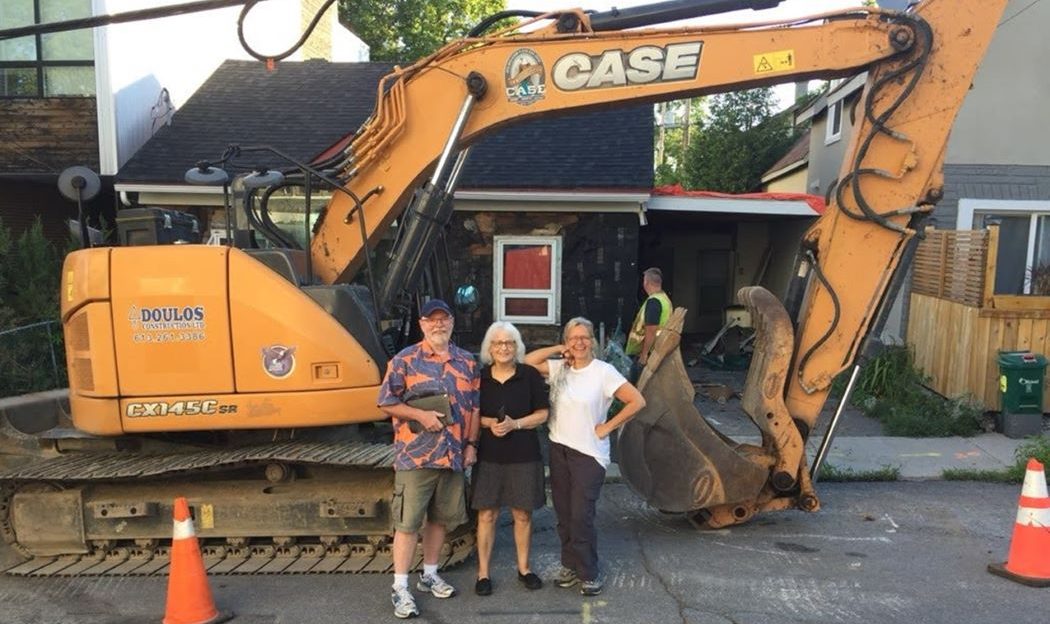
The building process and an eye to the future
“‘Building a custom home is not for the faint of heart,’” Mark says they were warned by Kariouk early in the process. “I had no idea. When we began the process, I think we were naïve about the process of building a home… the permits, everything, and the cost of all that. I don’t know we really thought about structural engineers and surveyors and the tens of thousands of dollars you pay to the city.”
Once all those permits and approvals were in place, a fresh set of challenges awaited with the building of two new, unusual homes on a tiny lot.
Dealing with construction was like “dental work,” says Kariouk. Notes Crossford’s Lindsay Nicol, “There wasn’t a lot of wiggle room to manipulate and keep all the neighbours happy. Appreciating what the neighbours are going through goes a really long way in a project like that… A project like this is different from a typical cookie-cutter box home, it’s so far outside the box, pardon the pun.”
Hurdles overcome, the Sorelle House has become an integral and enduring part of the neighbourhood.
Long-term thinking went into the project, and not just in designing it for aging in place.
Smaller homes, especially when combined as the two are, require less CO2-emitting energy for heating and cooling (that’s especially the case here, where summertime warm air is drawn up and expelled through the roof-level doors and skylights).
The exterior red and black steel cladding — which Kariouk calls a “humble” material — is another environmentally sensitive feature. More than being simply visually arresting and a nod to the original working-class population of Hintonburg, it’s designed to keep the elements on the outside of the home, last for centuries, and, when its lifespan has been reached, recycled.
The homes’ abundant windows reduce the need for artificial light, and radiant floor heating and a hybrid water heater with its own heat pump help keep energy consumption under control.
Fitting two homes where one once stood also accords with the City of Ottawa’s push for densification and gives the owners easy access to a walkable neighbourhood with services and transit nearby.
Most of all, though, the Sorelle House is a thoughtful and unique structure, observes Mark.
“It was designed by the same team, but the two homes are so different.”
